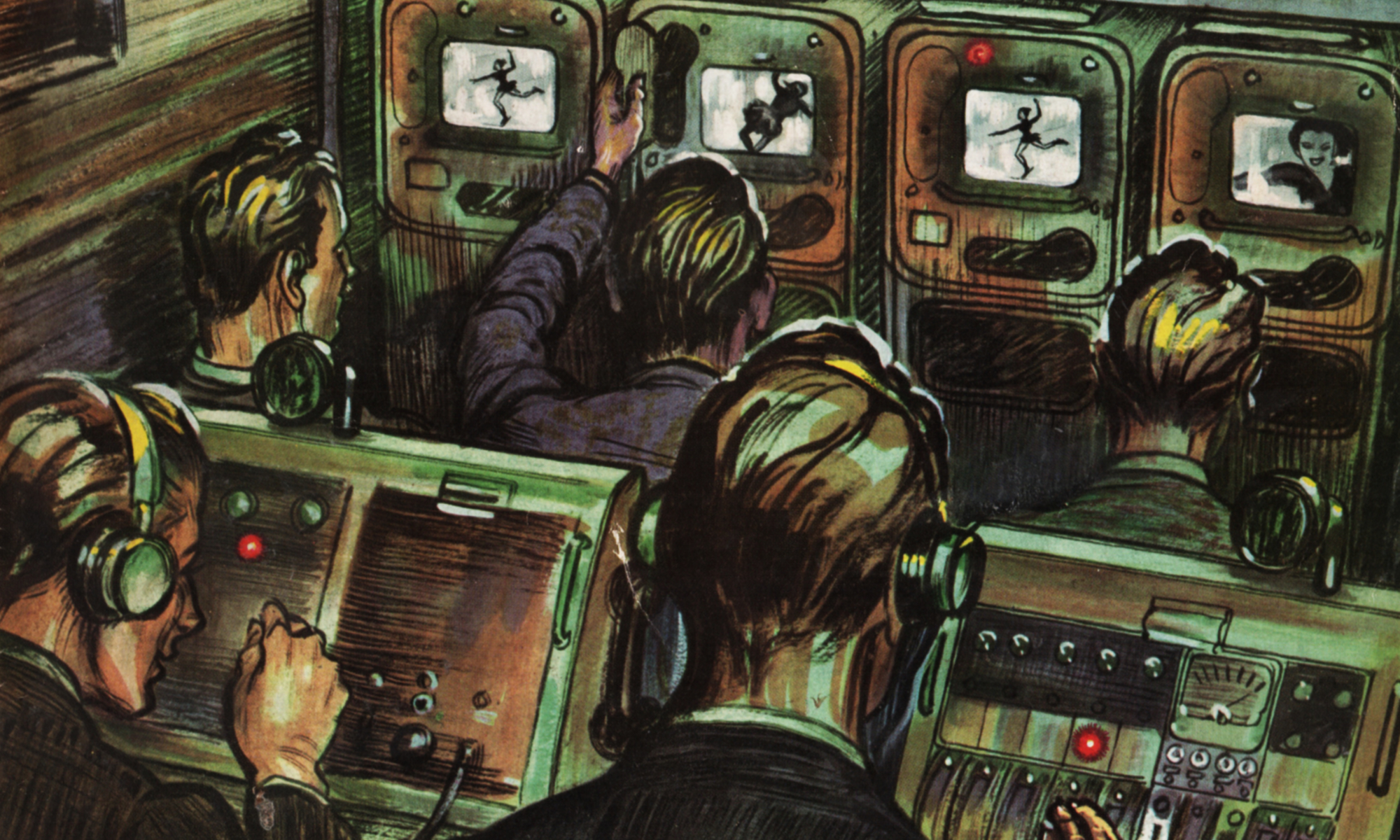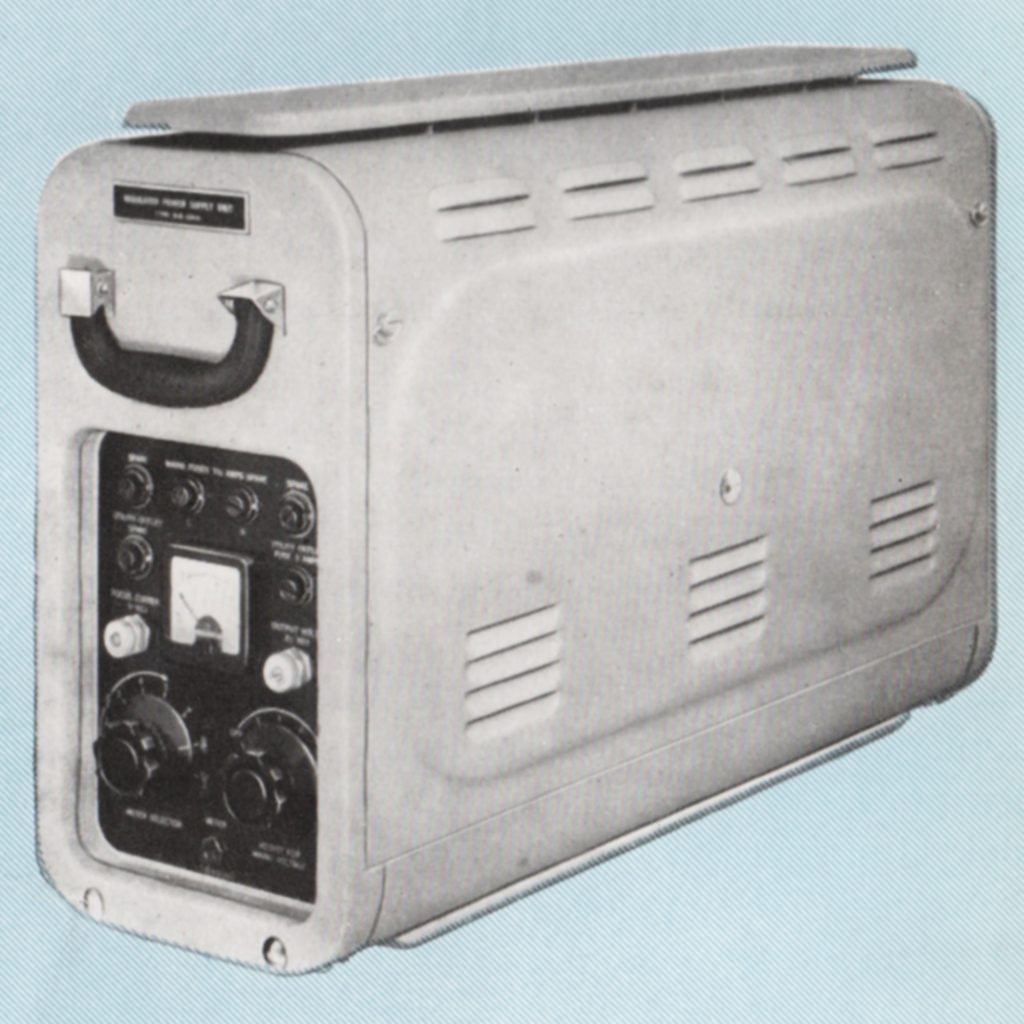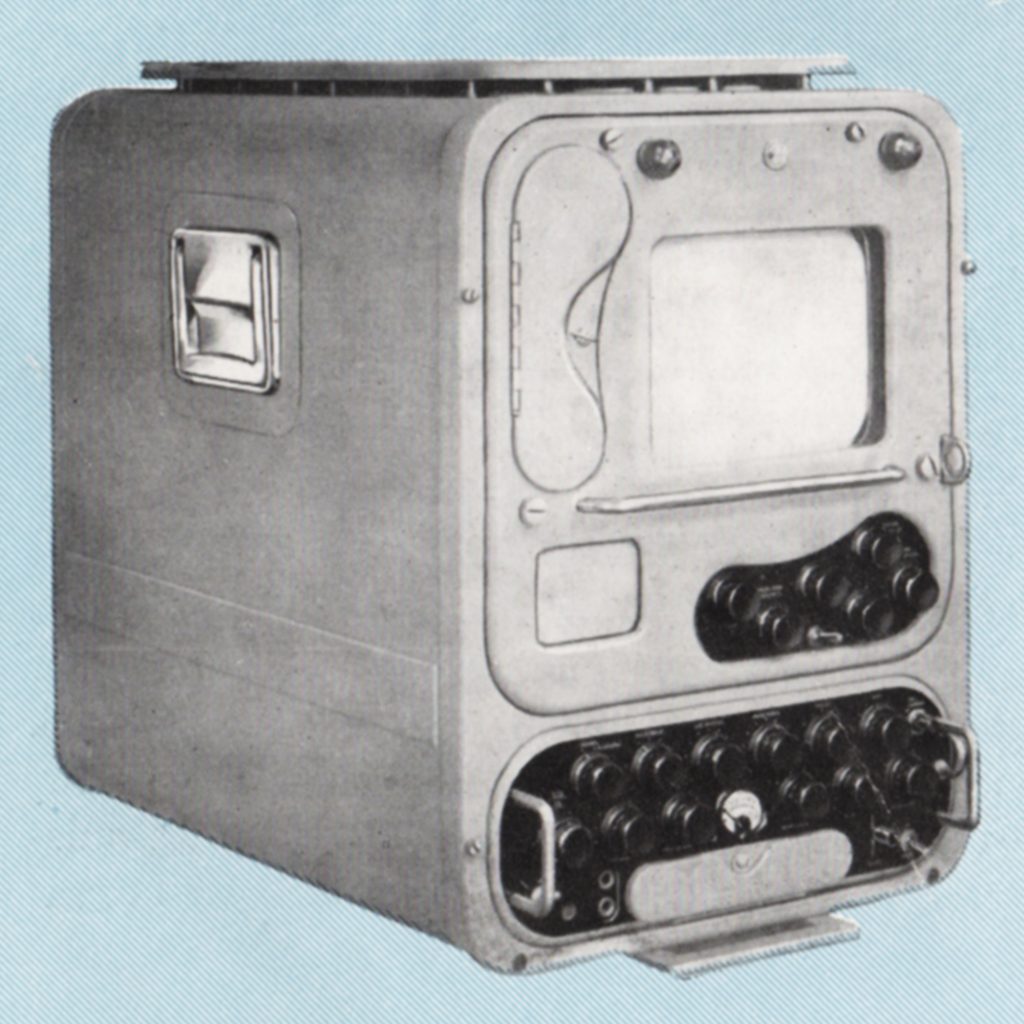Each television mobile control room is equipped with two or three mobile image orthicon camera channels, type BD808, as well as vision and sound mixing apparatus and associated power supply equipment. This camera channel gives the highest technical performance combined with maximum operating facilities.
Television Camera Type BD687
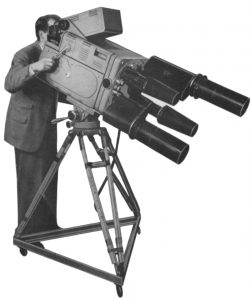
THE CAMERA is built in two basic versions to permit the use of either a 3-inch or 4½-inch image orthicon tube. A feature of the camera is its lens turret. This will carry four lenses which may be any combination from 2-inch to 40-inch lenses. A zoom lens and an 80-inch lens may also be used and with both 40- and 80-inch lenses in position the turret may still be rotated with ease, the mechanical handling of the camera being exceedingly fine. Light intensity control is by means of a variable graded filter which replaces conventional remote iris control methods. This control may be carried out from the camera control position. Televising at difficult angles is greatly facilitated by the counter-poised viewfinder which may be moved independently on the camera and so allows operating ease with the camera pointing at sharp angles. The sensitivity of the camera is such that it will operate with as low as 1-ft. candle incident illumination making it ideal for outside broadcast use.
Camera Control Unit
THE CAMERA control unit contains the necessary control and amplifier circuits for the camera. It is normally associated with a picture and waveform monitor, the two units being assembled together to form a control position for each camera channel.
Signals are fed from this unit to the vision mixer, the camera viewfinder, and the monitor. Communication facilities are also provided between cameraman and camera-control operator.
Picture and Waveform Monitor
DESIGNED FOR a variety of uses the picture and waveform monitor incorporates a ten-inch picture tube and a five-inch waveform tube. One such unit is employed at each camera channel control position and a further monitor serves as a production monitor when used in conjunction with the vision mixer.
Vision Mixer
THE MIXER is suitable for desk mounting in the producer’s position. It provides facilities for cutting, mixing and fading between seven inputs. Four outputs plus a monitoring output are available. Direct switching is employed, together with bias fading.
Synchronising Generator
THE SYNCHRONISING generator provides the synchronising and blanking pulses, and the line and field driving pulses for the system. Electrically the circuits divide into two — those providing the timing information and those generating the required waveform. For the sake of convenience the synchronising generator used on 525 and 625 line systems is divided physically into two corresponding chassis: that used for405 line operation, however, is one unit.
Regulated Power Supply Unit
EACH CAMERA channel has its own power supply unit which is designed to provide all AC and DC supplies, part of the DC output being electronically regulated. Facilities are provided on this unit for mains input transformer tap changing to give maximum flexibility in operation, so permitting a camera channel to be operated remote from the mobile unit.
Focus Supply Unit
UP TO FOUR focus supply units may be assembled in one case for mobile applications. Each unit comprises a small panel which supplies power to the focus coils of the camera.
RF Monitor
HAVING a 17-inch picture tube, this unit is used as an RF check receiver for cueing and general monitoring purposes.
Sound Control Equipment
SPECIALLY designed for television OB work, this equipment comprises three main items—an amplifier unit, a power supply unit and a control panel. Facilities are provided for the control of five low-level and two high-level inputs with high-level mixing. Prefade listening on all input channels is possible and two independent outputs are available. In operation, all control is carried out from the control panel which is similar in appearance to the vision mixer. Quadrant-type faders are used and each fader has an associated visual indicator.
Communication Unit
OPERATING personnel need to be in communication with the producer and other members of the production team, and similar facilities are required between the camera and control positions for technical purposes. The communication units, of which several types are available, serve to provide the necessary facilities.
Centimetric Vision Link
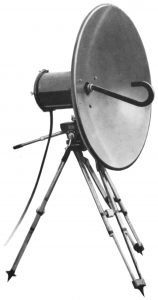
FOR PROGRAMME relaying between a remote pickup and the main studio centre, the centimetric link is ideally suited. The ultra-short operating wavelength, of less than 5 cm, enables parabolic antennae with high gains to be used, so giving directional transmission over line-of-sight paths up to 40 miles in length. The equipment includes a control unit and transmitter at the transmitting end of a link and a receiver, control unit and power supply unit at the receiving end.
Centimetric Sound Link
COMPANION to the vision link, the sound equipment comprises transmitter and receiver head units each with its power supply unit, this latter being identical in both cases.
Voltage Control Unit
HAVING a handling capacity of 12.5 kVA, this unit supplies all the power to the vehicle at constant voltage. All circuits are fused and metering and alarm facilities are included.

